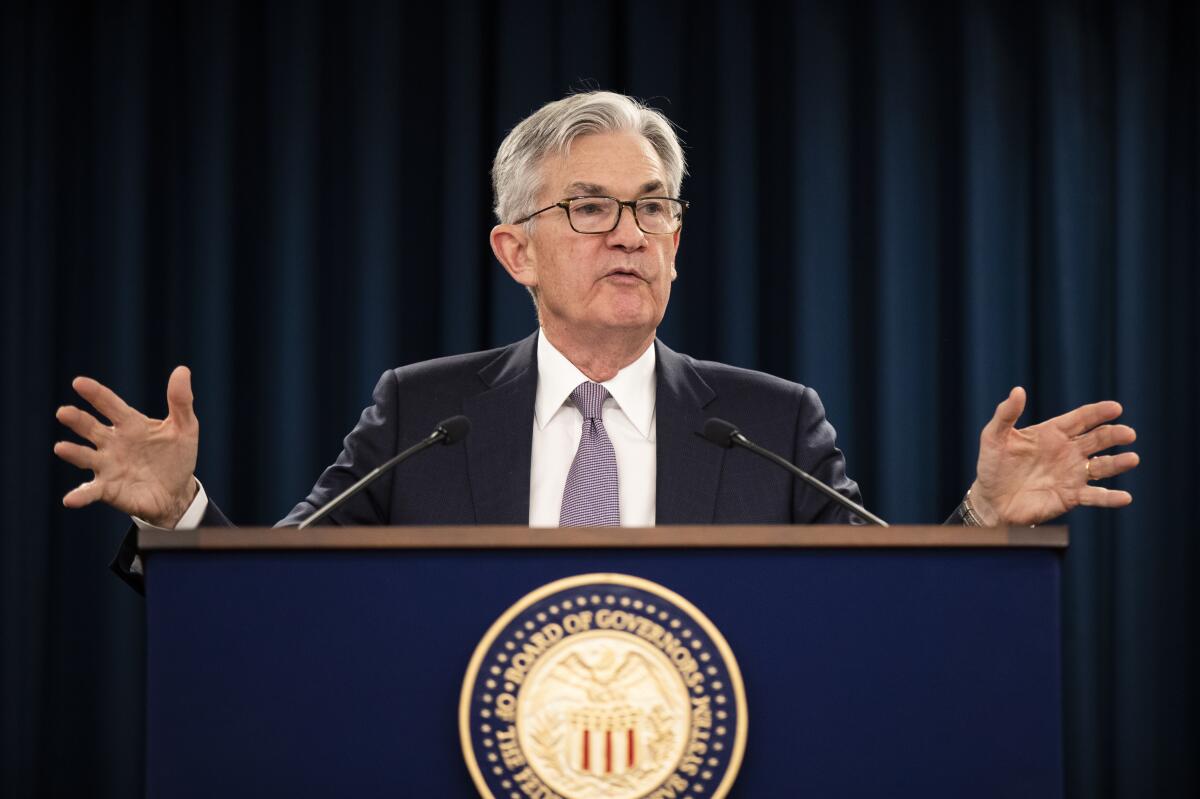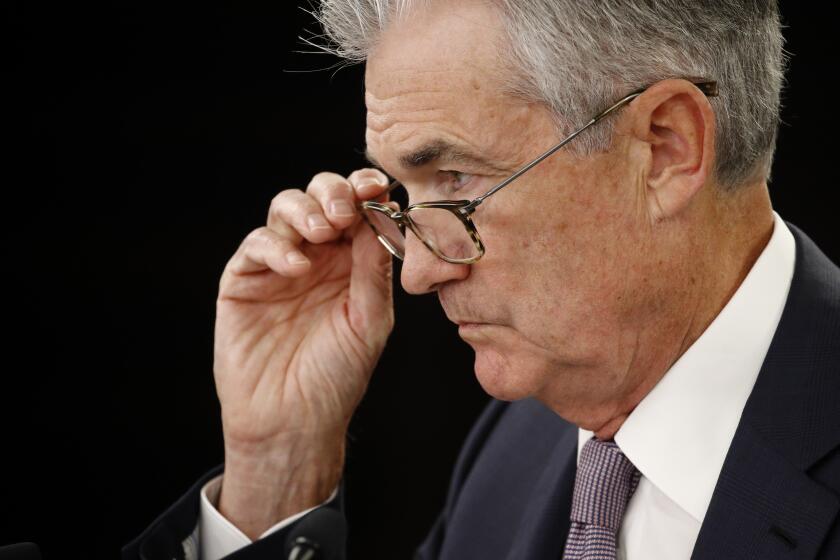A brief history of the Federal Reserve’s emergency rate shifts

- Share via
Federal Reserve policymakers cut interest rates Tuesday, outside their normal cycle of meetings, for the first time since 2008.
They did so to shield the U.S. economy from the effects of the coronavirus outbreak.
Such moves are rare, yet not unprecedented. Here’s a brief history of the times when Fed officials have delivered an inter-meeting shift to monetary policy:
March 3, 2020
The Fed cut its key rate by 50 basis points to a range of 1% to 1.25%.
In first such move since the Great Recession, the Fed cuts the benchmark interest rate by half a point to offset the economic effects of coronavirus.
“The coronavirus poses evolving risks to economic activity,” the Fed said in a statement. “In light of these risks and in support of achieving its maximum employment and price stability goals, the Federal Open Market Committee decided today to lower the target range for the federal funds rate by 1/2 percentage point.”
The central bank also said it is “closely monitoring developments and their implications for the economic outlook and will use its tools and act as appropriate to support the economy.”
Oct. 8, 2008
As the collapse of Lehman Bros. Holdings Inc. roiled financial markets and raised recession fears, the Fed cut the federal funds rate by 50 basis points to 1.5% as part of a coordinated action.
“The Committee took this action in light of evidence pointing to a weakening of economic activity and a reduction in inflationary pressures,” the Federal Open Market Committee said. It would go on to ultimately cut its main rate to as low as 0.25%.
Jan. 22, 2008
The Fed cut its key rate by 75 basis points to 3.5% after stock markets tumbled amid increasing signs of a U.S. recession.
Policymakers said in a statement that they acted “in view of a weakening of the economic outlook and increasing downside risks to growth.”
Aug. 17, 2007
The Fed lowered its discount rate — the rate it charges banks — by 50 basis points to 5.75% as the subprime-mortgage collapse roiled financial markets.
“The Federal Reserve is providing liquidity to facilitate the orderly functioning of financial markets,” policymakers’ statement said.
Sept. 17, 2001
Days after the 9/11 attacks, the Fed cut its main rate by 50 basis points to 3% and promised to provide markets with “unusually large volumes of liquidity.”
Central banks in Europe and Canada matched the action.
April 18, 2001
Policymakers cut their benchmark interest rate by half a percentage point in an effort to shore up a slumping economy. It lowered its target rate for overnight loans between banks to 4.5% from 5%.
The Fed “has reviewed prospects for the economy in light of the information that has become available since its March meeting,” the Fed said in a statement.
Jan. 3, 2001
With the technology stock bubble having burst the previous year, the central bank began the new year by cutting its benchmark by 50 basis points to 6%. It was quite a shift from a few weeks earlier, when the Fed said the economic risks leaned towards inflation.
“These actions were taken in light of further weakening of sales and production, and in the context of lower consumer confidence, tight conditions in some segments of financial markets, and high energy prices sapping household and business purchasing power,” officials said.
Oct. 15, 1998
As Russia’s financial crisis and the collapse of the hedge fund Long Term Capital Management threatened a credit crunch, the Fed cut its rate by 25 basis points to 5%.
“Growing caution by lenders and unsettled conditions in financial markets more generally are likely to be restraining aggregate demand in the future,” it said.
April 18, 1994
The Fed can also increase rates outside of its normal schedule, not just cut. That’s what happened when it raised its rate to 3.75% from 3.5%.
“Chairman Alan Greenspan announced today that the Federal Reserve will increase slightly the degree of pressure on reserve positions,” the statement said. “This action is expected to be associated with a small increase in short-term money market interest rates.”
More to Read
Inside the business of entertainment
The Wide Shot brings you news, analysis and insights on everything from streaming wars to production — and what it all means for the future.
You may occasionally receive promotional content from the Los Angeles Times.











